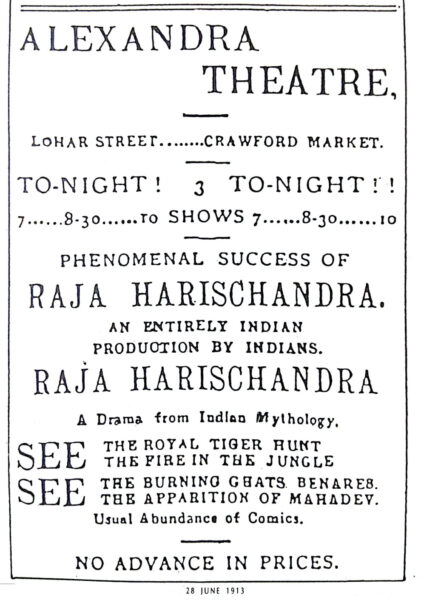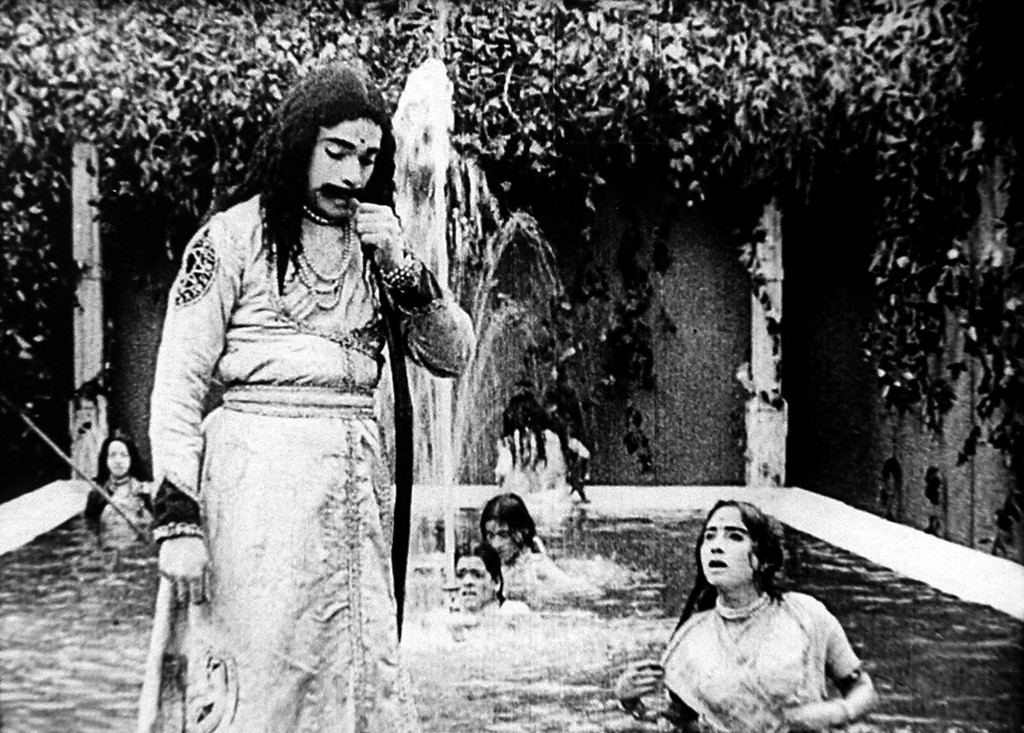May 3, 1913. Exactly 102 years ago, a film about a righteous and noble king who always stood by his word, opened to the public at the Coronation Cinema in Bombay. As crowds thronged to see the film, little did its maker know then he was laying the ground for what would become the world’s largest ‘institute of the imaginary’, or as we know it today, the Indian film industry. The film was Raja Harishchandra and its maker, Dhundiraj Govind Phalke.
It all began in the Christmas of 1910. When Phalke saw The Life of Christ at the American-Indian cinema on Bombay, he realized he had found his calling in life. Not just that, he also wondered that just like Christ, why not make stories of Lord Rama and Krishna for Indian audiences?
Raising a loan and pledging his life insurance policy, Phalke sailed for England on February 1, 1912. to purchase the necessary equipment and amongst others, met British pioneering filmmaker, Cecil Hepworth, to acquaint himself himself with the technical aspects of filmmaking. After spending about two weeks in London, Phalke returned to India with a Williamson camera, a perforating machine, developing and printing equipment and some raw stock.
However, Phalke still lacked the funds to make a full-fledged film. So he decided to experiment with a short film on time lapse photography, photographing intermittently the growth of a pea plant. The resulting film was shown to friends and a prospective financier. They were astounded and Phalke got his backing from Yeshwant Nadkarni, a Bombay dealer in photographic goods.
Though initially planning a project on Lord Krishna, Phalke decided to go ahead with a comparatively less ambitious project, but one based on Indian mythology, nevertheless. He settled on the story of Harischandra, a benevolent king, who sacrificed his kingdom and family in order to keep his promise, being finally rewarded by the Gods for his fortitude.
Even as Phalke began work on Raja Harishcandra, he faced a peculiar problem. By then, Indian theatre and dance had lost its standing and had become the domain of the degraded castes, the occupation of prostitutes. The new theatrical tradition, that was slowly gathering strength in some cities was still restricted to a privileged few. Knowing he could never ask a decent woman to act for him, Phalke visited several prostitutes, but even they said no. For them to appear in front of the camera, meant publicly branding themselves as whores. wondering what to do, Phalke observed a young man in a restaurant, a cook, with slender features and hands, earning ten rupees a month. Phalke offered him a monthly salary of fifteen rupees to work in his company, Phalke Films. The young man, A Salunke, agreed and Raja Harishchandra finally got its heroine!
For its time, Raja Harishchandra was a massive project. Said to be 3700 feet long, the film was shot in Bombay and its vicinity and took almost eight months to finish. It was first shown to a select audience that included famous personalities of Bombay and the editors of various newspapers on April 21, 1913 at Olympia Theatre in the Grant Road area of Bombay. On May 3rd, it opened at the Coronation to the public. The rest, as they (always) say, is history.
Sadly, the film is lost to us today. Phalke remade the film in 1917 as Satyavadi Raja Harishchandra, said to be slightly shorter in length after the prints of the original version supposedly wore out. Whatever footage we have, of two reels duration, belongs to the 1917 version.
Looking at the footage, it has to be said that Phalke was quite an astute storyteller. The first reel, for instance, establishes the king and his family, his hunting excursion, his disturbing Sage Vishwamitra’s penance and handing over his kingdom to the sage, and finally leaving with his family to collect Dakshina after the sage comes and claims the kingdom – all this within 9 minutes!
Raja Harishchandra led to a glorious period of filmmaking, not only for Phalke, but also for other pioneers entering the film industry and helping it spread all over India. Like Phalke’s pea plant, the Indian film industry is fully grown and continues to expand today.



